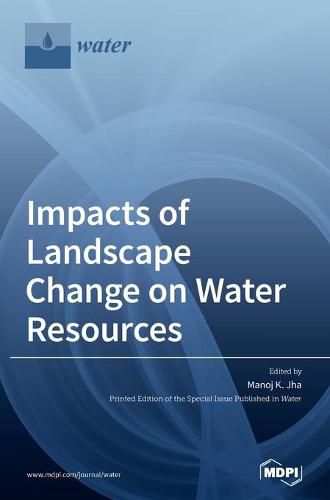Readings Newsletter
Become a Readings Member to make your shopping experience even easier.
Sign in or sign up for free!
You’re not far away from qualifying for FREE standard shipping within Australia
You’ve qualified for FREE standard shipping within Australia
The cart is loading…






This title is printed to order. This book may have been self-published. If so, we cannot guarantee the quality of the content. In the main most books will have gone through the editing process however some may not. We therefore suggest that you be aware of this before ordering this book. If in doubt check either the author or publisher’s details as we are unable to accept any returns unless they are faulty. Please contact us if you have any questions.
Changes in land use and land cover can have many drivers, including population growth, urbanization, agriculture, demand for food, evolution of socio-economic structure, policy regulations, and climate variability. The impacts of these changes on water resources range from changes in water availability (due to changes in losses of water to evapotranspiration and recharge) to degradation of water quality (increased erosion, salinity, chemical loadings, and pathogens). The impacts are manifested through complex hydro-bio-geo-climate characteristics, which underscore the need for integrated scientific approaches to understand the impacts of landscape change on water resources. Several techniques, such as field studies, long-term monitoring, remote sensing technologies, and advanced modeling studies, have contributed to better understanding the modes and mechanisms by which landscape changes impact water resources. Such research studies can help unlock the complex interconnected influences of landscape on water resources in terms of quantity and quality at multiple spatial and temporal scales. In this Special Issue, we published a set of eight peer-reviewed articles elaborating on some of the specific topics of landscape changes and associated impacts on water resources.
$9.00 standard shipping within Australia
FREE standard shipping within Australia for orders over $100.00
Express & International shipping calculated at checkout
This title is printed to order. This book may have been self-published. If so, we cannot guarantee the quality of the content. In the main most books will have gone through the editing process however some may not. We therefore suggest that you be aware of this before ordering this book. If in doubt check either the author or publisher’s details as we are unable to accept any returns unless they are faulty. Please contact us if you have any questions.
Changes in land use and land cover can have many drivers, including population growth, urbanization, agriculture, demand for food, evolution of socio-economic structure, policy regulations, and climate variability. The impacts of these changes on water resources range from changes in water availability (due to changes in losses of water to evapotranspiration and recharge) to degradation of water quality (increased erosion, salinity, chemical loadings, and pathogens). The impacts are manifested through complex hydro-bio-geo-climate characteristics, which underscore the need for integrated scientific approaches to understand the impacts of landscape change on water resources. Several techniques, such as field studies, long-term monitoring, remote sensing technologies, and advanced modeling studies, have contributed to better understanding the modes and mechanisms by which landscape changes impact water resources. Such research studies can help unlock the complex interconnected influences of landscape on water resources in terms of quantity and quality at multiple spatial and temporal scales. In this Special Issue, we published a set of eight peer-reviewed articles elaborating on some of the specific topics of landscape changes and associated impacts on water resources.